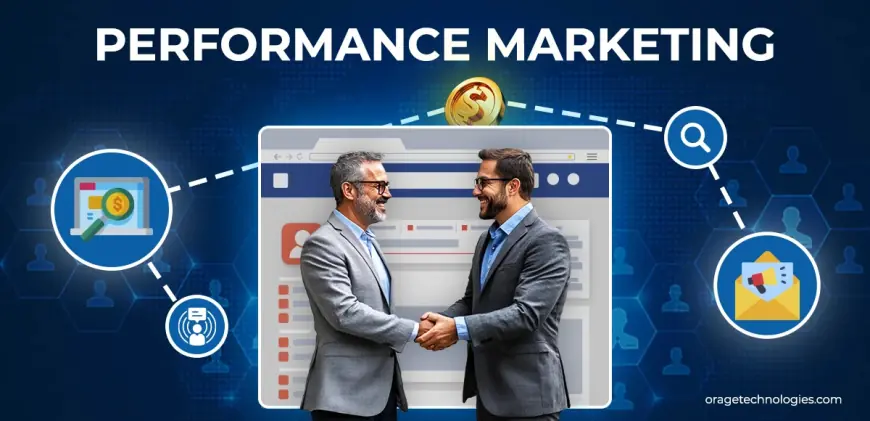Performance Marketing: Your Key to Effective Advertising in 2025

As digital marketing spend is set to reach $835 billion by 2026 (Statista, 2024), businesses need strategies that guarantee results. Performance marketing delivers by focusing on measurable outcomes like clicks, leads, or sales. With 70% of brands leveraging performance marketing for growth (IAB, 2023), this guide offers a professional, data-driven overview of its channels, benefits, and strategies to help startups and businesses optimize budgets and achieve success in 2025.
What Is Performance Marketing?
Performance marketing is an advertising model where brands pay only for specific actions, such as clicks or conversions. Unlike traditional advertising, which charges for visibility, performance marketing ensures budgets are tied to tangible results, making it ideal for startups and e-commerce brands seeking efficient growth.
Channels of Performance Marketing
Performance marketing operates across multiple channels, each targeting metrics like cost-per-click (CPC), cost-per-lead (CPL), or cost-per-sale (CPS). Key types include:
1. Paid Search
Ads on Google or Bing target high-intent users, with costs incurred only when users click, ensuring efficient use of performance marketing budgets.
2. Social Media Advertising
Platforms like Facebook, Instagram, LinkedIn, and TikTok enable precise targeting by demographics or behaviors, with performance marketing costs tied to clicks or interactions.
3. Affiliate Marketing
Partner with bloggers or influencers to promote products, paying commissions for sales or leads in a cost-effective performance marketing approach.
4. Email Marketing
Targeted email campaigns, automated with tools like Mailchimp, deliver up to a 4200% ROI when segmented effectively (DMA, 2023) in performance marketing.
5. Influencer Marketing
Influencers promote products, with performance marketing payments linked to outcomes like code redemptions, often yielding high engagement.
Benefits of Performance Marketing
Performance marketing is a top choice in 2025 for its measurable impact. Key advantages include:
1. Budget Efficiency
Performance marketing ensures payments align with results, ideal for businesses with limited advertising funds.
2. Data-Driven Decisions
Real-time analytics track impressions, clicks, and conversions, empowering smarter performance marketing strategies.
3. Campaign Control
Adjust budgets or creatives instantly, optimizing performance marketing campaigns in real time.
4. Strategic Flexibility
Test new pages or pause campaigns, making performance marketing adaptable for growth.
5. Precise Targeting
Segment audiences by demographics or behaviors to boost ROI in performance marketing efforts.
Strategies for Performance Marketing Success
To maximize performance marketing results, focus on these factors:
1. Robust Tracking
Use Google Analytics or Facebook Pixel to monitor user activity and assess performance marketing effectiveness.
2. Compelling Offers
Craft clear products and calls-to-action to drive conversions in performance marketing campaigns.
3. A/B Testing
Test headlines and CTAs to refine performance marketing ads based on data insights.
4. Brand Trust
Combine branding with performance marketing to build familiarity and increase conversions.
5. Competitive Analysis
Unique targeting in competitive markets helps performance marketing campaigns stand out.
6. User Experience
Fast, mobile-friendly landing pages enhance performance marketing success by retaining users.
Conclusion
Performance marketing is redefining advertising in 2025, offering a results-focused approach to optimize budgets and drive growth. By leveraging targeted channels, compelling offers, and continuous testing, businesses can achieve measurable success. Embrace performance marketing to elevate your brand with precision and efficiency.
What's Your Reaction?
 Like
0
Like
0
 Dislike
0
Dislike
0
 Love
0
Love
0
 Funny
0
Funny
0
 Angry
0
Angry
0
 Sad
0
Sad
0
 Wow
0
Wow
0

















































